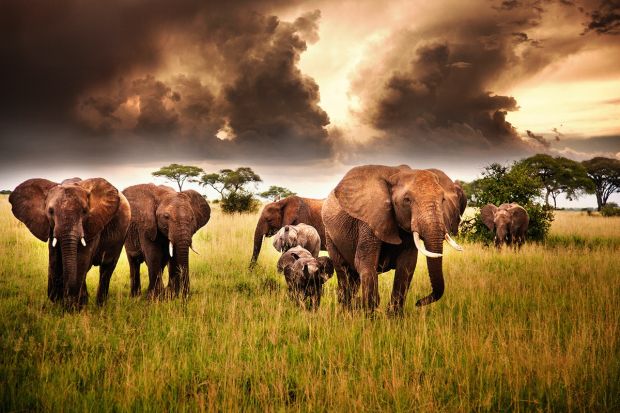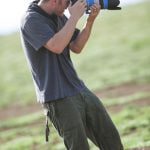
According to a recent United Nations report, Earth is losing species 100 to 1,000 times the historical average, and almost 25% of the world’s mammals face extinction in the next 30 years, thanks to poaching, human habitat destruction and climate change.
But those numbers will be diminished if Chris Ward, Malibu resident, composer and, now, wildlife photographer has anything to say about it.
Ward is hosting a photo exhibit and conservation lecture later this month, with live African music setting the stage to showcase the plight of disappearing wildlife through his lens trained on Africa’s most magnificent creatures. All funds raised through sales at the exhibit will go to benefit Pam’s Foundation, a Tanzanian nonprofit dedicated to wildlife preservation.
“We are in a period of mass extinction, like the dinosaurs,” Ward said. “Except most of Africa’s wildlife is disappearing because of what man does. Ivory trade is still huge in China, so there is still a market for elephant tusks.”
Ward was quick to point out that he is not the first to raise alarm bells about species extinction — or even the loudest. He cited individuals and organizations that have come before him as leaders lighting the path to awareness. He mentioned the work of British wildlife photographer Nick Brandt and the organization Born Free. But after his first trip to Tanzania last year, he is passionate about doing whatever he can to help save the elephants, cheetahs and other animals whose habitat is disappearing daily.
“I went to Africa knowing nothing about the critical status of anything,” Ward said. “I was blown away how raw and beautiful the land was. It really is the cradle of everything. It showed me how fragile humans are. If you take six steps outside of your truck, six animals will kill you. And these animals will be gone in 40 or 50 years, unless we start to do something now.”
Ward’s three-week journey had him confronting situations heretofore un-encountered in his career — like waiting 12 hours (with a patient guide/driver) out in the Serengeti bush for a single mother leopard to descend from a tree with her twin cubs so he could get some clear photographs. He said he realized that wildlife conservation is not a task one person or one organization can tackle.
Various African governments have set many large tracts aside as wildlife refugees, but the areas are too vast to patrol effectively.
“Animals get killed for trophies in the corridors between parks,” Ward said. “Everyone wants to go after the large male, who of course protects the herd. This will only change with education.”
Ward said that, while a slow engine, awareness works. He noted that after a photo campaign in Japan that showed the carcasses of elephants massacred for their tusks, demand for ivory dropped dramatically.
“Japan only represents 1% of the global ivory trade now,” Ward said. He mentioned Satao, Africa’s iconic elephant famed for huge tusks that almost reached the ground. Satao was found butchered by poachers in May.
Though music is his background, Ward came by his photographic talent honestly. His dad, Fred Ward, was a major photographer for National Geographic and shot one of Life magazine’s covers of the Kennedy assassination. The younger Ward published work in Vogue and National Geographic as well.
Ward was film composer Hans Zimmer’s assistant after graduating from USC and worked with Zimmer on seven films, including “The Lion King.” Other film work includes “Tarzan” and several independent films and TV shows.
But helping to digitize his father’s some 1.2 million photo images for Corbis photo agency pricked his creativity and he found himself buying a huge Epson printer (Ward printed all the photos in the exhibit).
The idea of the exhibit (the lecture and “party” is free to the public) is to offer prints at prices that will purchase specific wildlife conservation needs. Twenty-five dollars, for example, will buy a raincoat or solar lamp for Masai scouts; $100 will buy food for a seven-man patrol team for 10 days in southern Tanzania, one of the worst hit ivory-poaching areas in Africa.
Ward is donating 100% of his proceeds to Pam’s Foundation efforts.
“People wonder what they can do,” Ward said. “They can go to Africa and spend money — that will help the governments support conservation.”
Chris Ward’s “Saving Africa” exhibit takes place July 26 at Sessions at the Loft, 2465 Ventura Blvd, in Camarillo, opening at 11 a.m. and with Ward speaking at 6 p.m.

